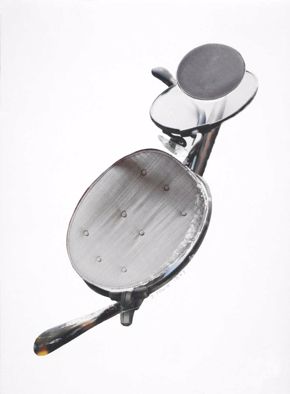Pasted Papers: The Art of Collage January 25–May 15, 2011

Jeffrey Cowie, Untitled, 1993, collage. Gift of the artist.
Irwin Kremen, Washington Run, 1976, paper, paint, and fabric. Gift of Louisa Stude Sarofim in honor of Joan Washburn.
Susan Benarcik, Untitled, 1991, etching and collage on paper. Gift of Clinton T. Willour in celebration of Kerry Inman's 50th birthday.
Robin Utterback, Romanza – September 1975 IV, 1975, acrylic and paper on paper.
Gift of Clinton T. Willour in honor of Emily Leland Todd
Louise Nevelson, The Great Wall, 1970, intaglio relief collage print with lead-foil and wood-grained relief elements on paper. Gift of Sue Rowan Pittman.
The 20 works in this exhibition explore the art of collage, a term derived from the French verb coller (to glue). It is used to describe both the technique and the resulting work of art in which pieces of paper, photographs, newspaper and magazine clippings, fabric, and other ephemera are arranged and attached to a supporting surface, usually paper. Collage can also include other media such as painting and drawing, and contain three-dimensional elements.
The art of collage has a long and distinguished history. The first examples appeared with the invention of paper in China around 200 BC, but collage did not emerge in the fine arts until the early 20th century with the modern Cubist experiments of Pablo Picasso and Georges Braque. Soon after, other modern art movements, including Futurism, Dadaism, Surrealism, and Abstract Expressionism, worked with collage. Contemporary artists continue to contribute to the medium by infusing it with innovative materials and technical processes, which meld technology and art to produce distinctly new collage formats. Including works by Ray Johnson, Alex Katz, Robert Motherwell, Louise Nevelson, and Anne Ryan, this exhibition features American artists who created collage as an expressive means to explore ideas, advocate concepts, and develop new directions in their art.
